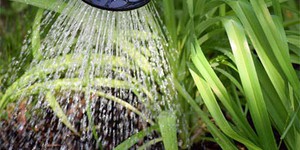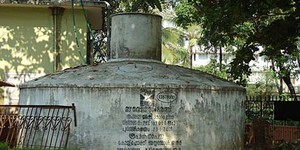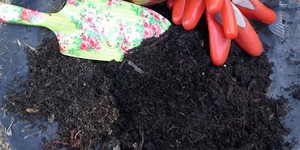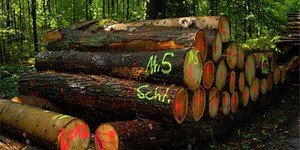Others Like “Soil Structure” (top 20 results)
|
Think about mountain ranges, canyons, sand dunes, or any other interesting geological feature you may live near enough to visit. The surface of the Earth is always changing due to a balance of forces both above and below the surface. Below-surface forces cause the Earth's crust to be faulted, folded, tilted, and lifted. Above-surface forces are primarily due to the natural processes of weathering and erosion. Can you show the effects of these forces using scale models, demonstrations,…
Read more
When pesticides are applied to protect crops, run-off of potentially harmful pesticides is a major problem. Can water plants such as hardstem bulrush, common cattail, parrotfeather and smooth scouring rush promote pesticide breakdown? If so, diversion of irrigation run-off into plant-filled ponds could help reduce pesticide pollution. Mix malathion at 12.5% of the recommended application strength (to simulate dilution by rain or irrigation water). Use 5-gallon buckets for testing various…
Read more
Divide a part of your garden into two equal plots, with each plot receiving equal amounts of sun. Cover one plot with two inches of organic mulch, such as compost or ground bark. Leave the other plot uncovered. Use the same amount of water for each plot for two or three weeks. At the beginning of the experiment, and at one-week intervals, dig down and check the soil in each plot for moisture content. Which plot holds water better? Which plot shows better plant growth? (McCausland, 2006)
Read more
Reclaimed (treated) wastewater can be used for many purposes, including landscape watering and freeing up valuable fresh water for other purposes (like drinking water). It's a great way to conserve water, but is it really safe? This science fair project is designed to find out.
Read more
Some plants use a lot of water, and some are very drought-tolerant. Drought-tolerant grasses are good for water conservation because they require less water to grow and stay green. How much less water do they need? Which types of grass are drought-tolerant? You can buy different types or brands of grass seed at your nursery that claim to be drought-tolerant. Grow them in a container and then starve for water after they are established. Which brands die out first? You can conduct a similar…
Read more
How much water do you use? Conserving water can do more than save your parents' money, it can also save freshwater ecosystems, wetlands, and watersheds. Some companies are trying to help fix the problem by making low flow faucets and showerheads. How well do they work? How much water can you save? Go to the hardware store to buy a few of the water saving products. Compare the amount of water that you run over a period of time to determine how much water you can save. Which water saving…
Read more
Soils are made of particles of different types and sizes. The space between particles is called pore space. Pore space determines the amount of water that a given volume of soil can hold. Porosity is the percentage of the total volume of soil that consists of pore space. Compare the porosity of different types of soil. Which types of soil hold the most water? Can you see this under a microscope?
Read more
We are all familiar with the nursery rhyme, "Rain, rain, go away, come again some other day...", or
the song "Singin' in the Rain." Numerous songs and stories describe our feelings about rain. Why so many?
Because we humans understand how important rain is to our well-being. Rainfall, as part of the
water cycle, brings water back to Earth that had previously evaporated or transpired
from the surface. When water vapor in the atmosphere condenses into clouds and falls back to Earth as rain,…
Read more
Make your own fertile soil using kitchen scraps, manure, leaves, grass clippings, and other compostable materials. Which materials make the best compost? How does the amount of nitrogen change the rate at which the compost forms? How does a 'hot' compost pile compare to a 'cold' compost pile, or how does traditional composting compare to worm composting, or vermiculture?
Figure 1. Different composting methods yield different soils. In this picture, the soil on the…
Read more
The conversion of forested to unforested areas has been occurring since humans began to impact and change their environments during the agricultural revolution. Recently deforestation has become a global problem, particularly for developing industrial countries and countries with very large populations. You can use satellite mapping resources to investigate the connection between urbanization, population growth and deforestation. You can also investigate the connection between deforestation…
Read more
|
Explore Our Science Videos
Make an LED Night-Light
Build a Simple Electric Motor
Sweet Earthquake Shake- STEM activity










